Navigating the Goldilocks Dilemma

In the fairy tale “Goldilocks and the Three Bears,” Goldilocks must choose between porridge that is too hot, too cold, and just right. On April 19th, as part of Platform Co-op School, Jason Spicer and Trebor Scholz gave talks on scaling American legacy cooperatives and platform co-ops, respectively. The following is a write-up of their lectures, considering what is “just right” when it comes to scaling (platform) co-ops.
Jason Spicer started by emphasizing the importance of getting to scale for cooperatives. He mentions the persistent focus of cooperatives on achieving scale and immediately addresses the often-heard rhetoric against scale and growth, which questions the sustainability and desirability of large co-ops.
Spicer notes the connection between growth and scale and references E.F. Schumacher’s book Small is Beautiful and subsequent works that advocate for small-scale production. He clarified that Schumacher’s ideas emerged as a response to the prevailing view that everything should be large-scale in the 1960s and early 1970s. Spicer understands the discussion of growth and scale is often conflated with the small-is-beautiful perspective, which he sees as a sloppy and poor conflation, and explains that E.F. Schumacher was actually calling for appropriately scaled enterprises that promote human flourishing. Spicer highlights the importance of actually reading Small is Beautifully and understanding the context of literature to avoid misinterpretation.
He is also citing an example of a ChatGPT summary of Jason Hickel’s book Less Is More which is entirely wrong. Spicer emphasizes that degrowth does not necessarily mean all firms will be small and that scale is not inevitably about maximizing profit or productivity, hierarchy, or bigness for its own sake.
Spicer explains economies of scale with a comparison of making two cookies versus a dozen cookies. Fixed costs are spread over a larger number of products as production increases, resulting in lower marginal costs per unit. Marginal costs increase dramatically if production becomes too large, leading to an increase in average costs. Finding the optimal scale of production is crucial for efficiency. Achieving an appropriate level of scale is necessary for responsible production that encourages human flourishing and development.
Spicer discusses the concept of economies of scale and how it has been applied in capitalism. He notes that economies of scale have led to a decline in the share of employment and GDP accounted for by agriculture, which has freed up resources and people for other industries.
Spicer argues that small local scale is not necessarily superior to large-scale organizations. The concept of local scale can be conflated with localism. He suggests that larger employers may have better systems and processes in place to treat their workers well and can also be targets for work or organizing. Additionally, he shares his personal experiences with small employers who have not necessarily acted in a responsible or ethical manner.
Spicer highlights three different approaches to community economic development in response to neoliberalism and globalization. He notes that small and local approaches often simply oppose large global scale, while cooperative development strategies more explicitly oppose neoliberalism. However, they have a mixed stance on globalization and focus on engaging in alter globalization rooted in cooperative and shared values.
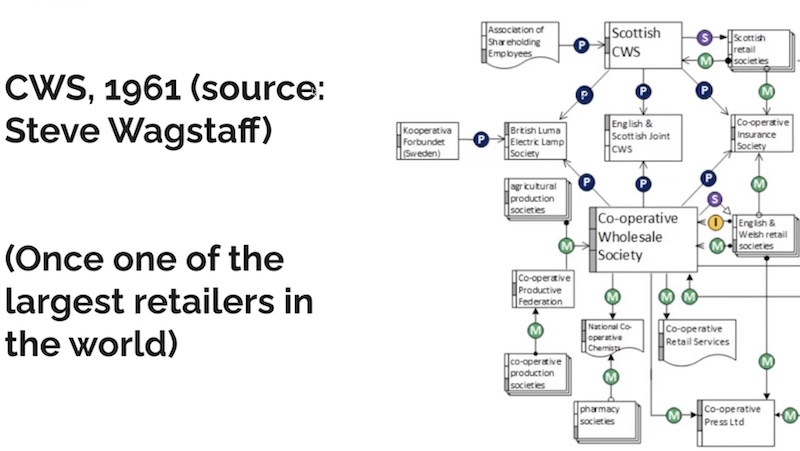
He cites the Cooperative Wholesale Society as one of the first examples of achieving global scale through cooperative development. He notes that it involved complex cross-ownership and cross-shareholding and was not based on a capitalist logic. He also mentions that the Cooperative Wholesale Society has since drifted far from its roots and become something else.
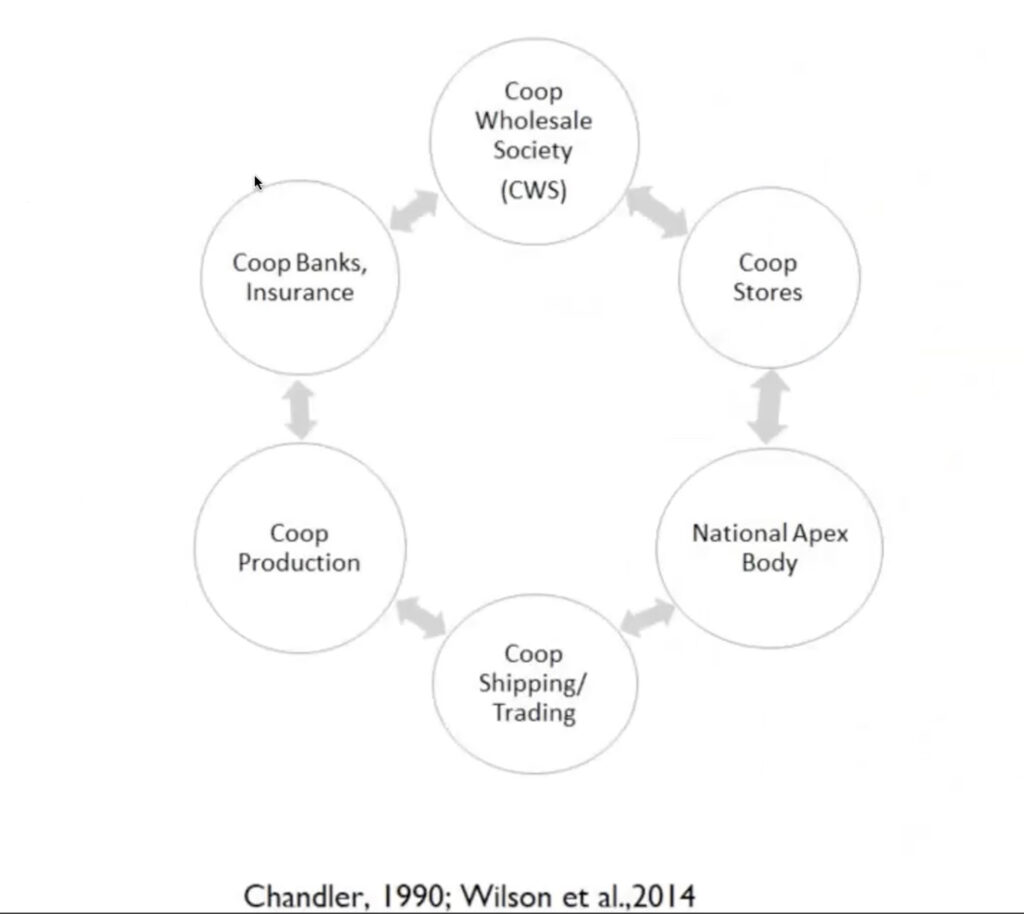
He explains that the cooperative wholesale society created their own ecosystem with banks, production, shipping stores, and a national apex body to advocate for policy, which is an example of cooperation at scale. He notes that some people argue that large corporations and conglomerates are no longer necessary in the current era.
He notes that there is a pushback against the idea that large global corporations are necessary for the current era and points out that publicly traded corporations such as General Motors and big retailers are disappearing from the economy. While the largest employers in countries like the United States are smaller today than they were 30 to 50 years ago, the largest employers taking their place are still tremendously large.
In the technology industry, there are still a handful of firms that dominate production and build out an ecosystem with other large firms. He notes that while they may not be the same size as some of the largest employers of a generation ago, they still have a tremendous scale and operate globally in the economy. He argues that the idea that technology is leading to small-scale everything is not necessarily true when looking at the long-term trends.
Spicer discusses Joseph Schumpeter’s concept of waves of creative destruction and innovation cycles under capitalism, where large-scale organizations transform the economy before being supplanted by new generations of companies that arise and take their place. He notes that while there are moments where it appears that scale plays less of a role, it is simply being transformed and keeps coming back in a different form because economies of scale and organizational economies of scale are fundamental truths.
Spicer expresses his frustration with the resistance to embracing the idea of scale, for instance, the resistance to consider establishing a company that can provide stable employment for low-income or working individuals. From his perspective and that of many working people he knows, the idea that everything must be extremely small and that any discussion of efficiency or economies of scale is suspect is simply a luxury.
Avoiding scale can come at a cost, as failing to reach a minimum scale required to withstand the cyclical waves of firm creation and destruction can make it more challenging for future generations of potential collaborators to discover and adopt the model. Many co-ops created in the 1960s and 1970s in the United States suffered from amnesia as they were unaware of previous co-ops that had simply disappeared, resulting in “discovery costs.”
Jason Spicer discusses organizational economies of scale and how entities can achieve scale. He mentions four perspectives produced by social scientists to think about achieving scale: the U-shaped cost curve, minimum efficient size, transaction costs, and the resources and capabilities approach.
The U-shaped cost curve suggests that there is a minimum point on the cost curve where a firm can be effective with its resources. The minimum efficient size approach suggests that a firm needs to be at a minimum place on the cost curve to be effective.
The transaction costs perspective suggests that a firm should continue to scale as long as the internal transaction costs of organizing its work are less than contracting out externally. Finally, the resources and capabilities approach suggests that a firm should scale given the constraints of the resources it has and the internal capabilities it possesses.
Spicer emphasizes that the concept of organizational economies of scale, which pertains to the optimal size, scope, and resource utilization of a firm, varies significantly depending on factors such as industry, function, natural resources, competitive advantages, policy context, and structure
While the optimal size and extent of a firm depend on factors such as industry, function, natural resources, competitive advantages, and policy context, there are some general rules of thumb that exist. Economies of scale tend to be most successful where fixed upfront costs are high, such as renewable energy infrastructure, airplanes, and rail cars. In contrast, economies of scale are highest where marginal costs are very low or zero, such as in television and video broadcasting.
Spicer explains that economies of scale can be broken down into different types of internal and external economies of scale. Internal economies of scale include technical, managerial, and financial economies, which allow a firm to reduce costs and become more efficient as it grows. Network economies of scale also play a role, where the value of a platform or network increases as more users join. External economies of scale include co-location of firms, urbanization, localization, and economies of scope, which allow firms to benefit from shared resources and opportunities due to their location or diversification.
Spicer discusses three specific ways in which scale can be achieved: horizontal, vertical, and conglomerate. Horizontal strategy involves doing more of what the business is already doing, while vertical strategy involves expanding into related areas, such as producing chocolate chips to go with cookies. Conglomerate strategy involves moving into entirely different lines of business, such as opening a bank. To achieve scale, a business can either acquire other businesses, expand organically, or partner and coordinate with other businesses.
Jason Spicer explains that mergers and acquisitions are not typically an option for cooperatives to achieve scale. Instead, cooperatives have historically sought to achieve scale through other means such as experimentation and innovation. Spicer also discusses the different ways in which firms can pursue scale, including horizontal, vertical, and conglomerate strategies. These strategies can be achieved through buying, building, partnering, federating, coordinating, and expanding the business internally and externally.
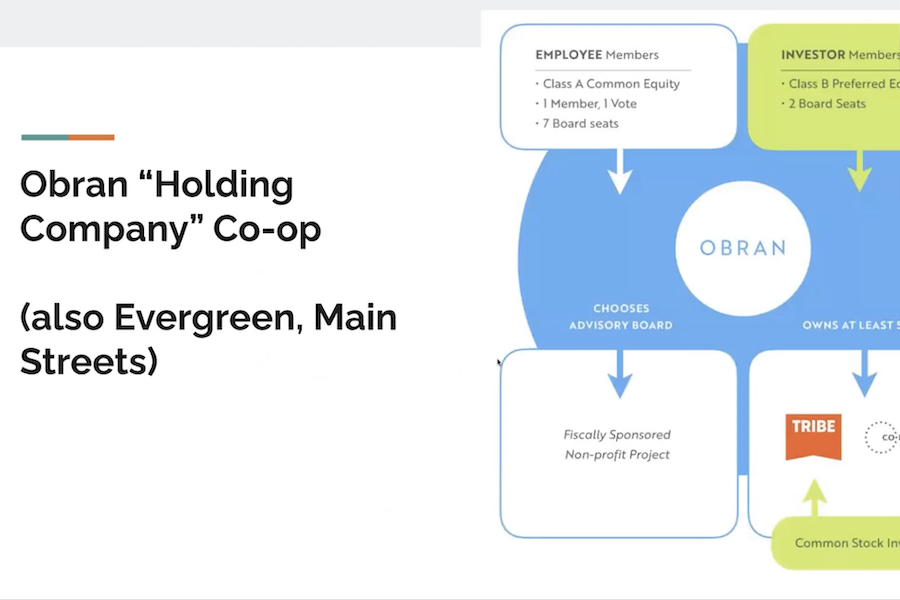
Spicer discusses different strategies that cooperatives can use to achieve scale, including horizontal, vertical, and conglomerate strategies. Some cooperatives have attempted to execute these strategies through conglomeration, such as the Obran Cooperative, and Evergreen Cooepratives. However, historically, cooperatives have achieved scale more organically, through slow growth and network expansion. The example of the Arizmendi network of cooperative bakeries in California illustrates how a central development and support cooperative can provide shared services and incubate more cooperatives to achieve scale over time.
Spicer discusses supply chain strategies as a form of federating to scale in this section. He refers to a piece he wrote about community ownership and how qualitative research showed that federating to scale through supply chain strategies can be effective in achieving cooperative expansion.
Jason Spicer discusses the importance of supply chain strategies as a way for cooperatives to federate and scale up. He refers to research he conducted on worker and community ownership models and found that when cooperatives made deals with suppliers or customers who were not values-aligned, they often faced pressure to produce at lower prices and struggled to stay afloat. Spicer emphasizes the importance of adhering to Principle 6 of cooperation among cooperatives and suggests that vetting and establishing minimum behavioral standards for supply chain partners can be a key component of cooperative strategies to scale.
In scaling up, cooperatives face a loss of democracy or voice at scale, similar to traditional businesses. To address this, cooperatives can federate while keeping decision-making and autonomy at lower levels. However, cooperatives face unique challenges in removing policy and funding barriers, as governments are more willing to accommodate profit-maximizing traditional firms than cooperatives due to their direct impact on tax revenues. This has always been a challenge for cooperatives.
One such strategy for scaling is the formation of central holding companies, which can purchase other businesses, with the workers in those businesses becoming part of the central holding company. Other variations include Evergreen Cooperatives and Main Streets Phoenix worker coop in Denver, which work differently. However, the success of these cooperative efforts is still uncertain. Another way for cooperatives to achieve scale is through the formation of federations, as demonstrated by the network of worker cooperative bakeries in the Bay Area of California.
This network used a slow growth approach to expand their scale, forming a central development and support cooperative that provides services to different bakeries. However, cooperatives face unique challenges in terms of policy and funding barriers that profit-maximizing firms do not. Governments are often more willing to accommodate traditional firms rather than cooperatives, as they see more direct tax revenues from profit-maximizing firms. To address this issue, cooperatives need to advocate for policy reforms, fee reductions, and access to government contracts and economic development programs.
In countries like the United States, there are no policies that enable cooperatives to reach scale as quickly as they can in countries with comprehensive cooperative-enabling statutes.
Statutes in the United States restrict what cooperatives can do and how they can coordinate. There are also barriers in the field of finance that prevent cooperatives from gaining access to non-market equity and debt, as well as public sector debt and procurement contracts.
Traditional investor-owned firms do not have cooperative-like restrictions voluntarily imposed on them as they do in some other countries. The net result is that cooperatives are left to operate in a less supportive policy environment, which can make it harder for them to scale up and compete with traditional investor-owned firms, limiting their potential impact on the economy and society.
When there is an incomplete national policy framework for cooperatives, it results in a restricted cooperative ecosystem, limited business and technical assistance, weak market performance, and ineffective lobbying. This creates a cycle that repeats itself, and there is a lack of cross-movement across different parts of the cooperative ecosystem.
He notes that in Toronto, there are very few worker cooperatives due to the lack of a well-formed, recognized, and well-connected worker cooperative ecosystem. In contrast, Montreal has more systematic organizing in the social entrepreneurship and social economy space, which provides better support for worker cooperatives. The key takeaway is that even a good business idea cannot achieve scale if it operates in a policy context where there is no systematic support for cooperatives.
Jason Spicer summarizes that not all cooperatives need to scale, but those that can achieve economies of scale should try to do so and have an obligation to do so for visibility and survival. Cooperatives need to federate to retain their voice internally and remain on mission, while also advocating for ecosystem policy inclusion and reform.
After his talk, in response to a question about how platform cooperatives can raise enough funding to scale and compete with capitalist players in the market without accepting money from profit-driven investors, Jason Spicer mentions that there is tremendous disagreement among actors in the cooperative economy and solidarity economy about this issue. He suggests that one potential solution could be to consider hybrid models, such as preferred equity or debt, where member owners retain majority control of economic and voting power but allow a mission-aligned investor to hold a minority share. Another potential solution is to rely more on mission-driven debt where investors are willing to accept a capped return that is stable and not based on active participation in the business. Spicer emphasizes that this is an emerging space, and the context may vary by different regulatory and policy contexts.
Following Spicers’ talk, Trebor Scholz carried the discussion to platform coops. While Spicer’s arguments may be provocative for some legacy cooperatives, they are shared by most people in the platform co-op community.
Scholz laid out slightly definitions of scaling, asking participants to get their terms straight. Scaling, he said, is often misunderstood as a business having to operate in more countries, reaching more and more customers. Instead, he distinguishes between scaling up, which refers to increasing size and operation, and scaling deep, which involves deepening relationships and the qualities of relationships within organizations through care practices. He also mentions the conglomerate route, which he refers to as scaling out.
Scaling up is a significant consideration for the platform cooperative movement, as digital businesses can benefit from network effects. However, it is essential to approach scaling in a way that aligns with cooperative principles and values, while also considering regulatory frameworks, legal structures, and the need for a supportive ecosystem. Blindly scaling up without considering the implications can lead to unsustainable growth and potential negative consequences for the cooperative and its members. Therefore, it is essential to have a clear understanding of what is being scaled and how it aligns with the cooperative’s principles and values. The global platform cooperative community is generally supportive of scaling up, but it is important to understand that not all platform co-ops need to be global.
Legacy co-ops in many countries have already scaled up.
The cooperative sector employs over 27 million people globally, with 16 million as employees and 11 million as worker-members. Cooperatives are successful in countries like Japan, Korea, and Denmark, with a significant contribution to the GDP of Kenya and New Zealand. Over 100 million Americans are members of credit unions. Italy has 25,000 worker coops, and 14,500 social cooperatives employ 360,000 paid workers in that country. In Spain, 17,000 co-ops provide employment for around 210,000 people. While some platform co-ops have reached very large size with hundreds of millions of revenue and tens of thousands of members, most of them are small.

The promise of platform cooperatives is that they can scale much faster and wider than traditional cooperatives because they don’t need to build up the same kind of infrastructure compared to traditional co-ops. A platform co-op like Fairbnb doesn’t need to build or purchase hotels employee staff to run them. But with this promise also come flawed expectations.
When discussing the potential for scaling up platform co-op models, Scholz argues, many tend to frame the conversation in terms of their ability to dismantle large tech companies. Such an “Uber killer” perspective is commonly found in academic literature and journalistic articles alike, but this is limiting framing. The statement that platform cooperatives may not be able to quickly dismantle large tech companies is the correct answer to the wrong question. Instead of focusing solely on replacing large tech companies, it is important to acknowledge that platform cooperatives can (and do) offer valuable alternatives that prioritize the shared interests of their workers, users, and communities. Platform cooperatives come in various shapes and sizes, and they have the potential to create value in different ways in various industries. It’s not an either/or situation where they have to either destroy existing corporate platforms or be deemed worthless.
It is important to understand the value that they are contributing and not merely reduce the discussion about scale to a zero-sum game.
Scholz argues that large global platform cooperatives, especially those that are worker-owned, have the potential to build a more just and equitable platform economy.
Many existing platform companies rely on minoritized, low-wage workers who often face unfair working conditions. By scaling up worker-owned labor platforms, Scholz believes that we can create a culture that supports equal access to just platform work, especially for low-wage and immigrant workers. In New York City where Drivers Cooperative with over 8700 onboarded drivers, for instance, is well-positioned to become a tertiary ride-hailing solution. While some platform co-op models may indeed outcompete their rivals, or become secondary or tertiary competitors in local markets, the primary goal of most platform cooperatives is to offer synergistic solutions to collective challenges, small or large.
But research focused on the United States suggests that cooperatives don’t tend to outcompete large corporations; they rather co-exist.
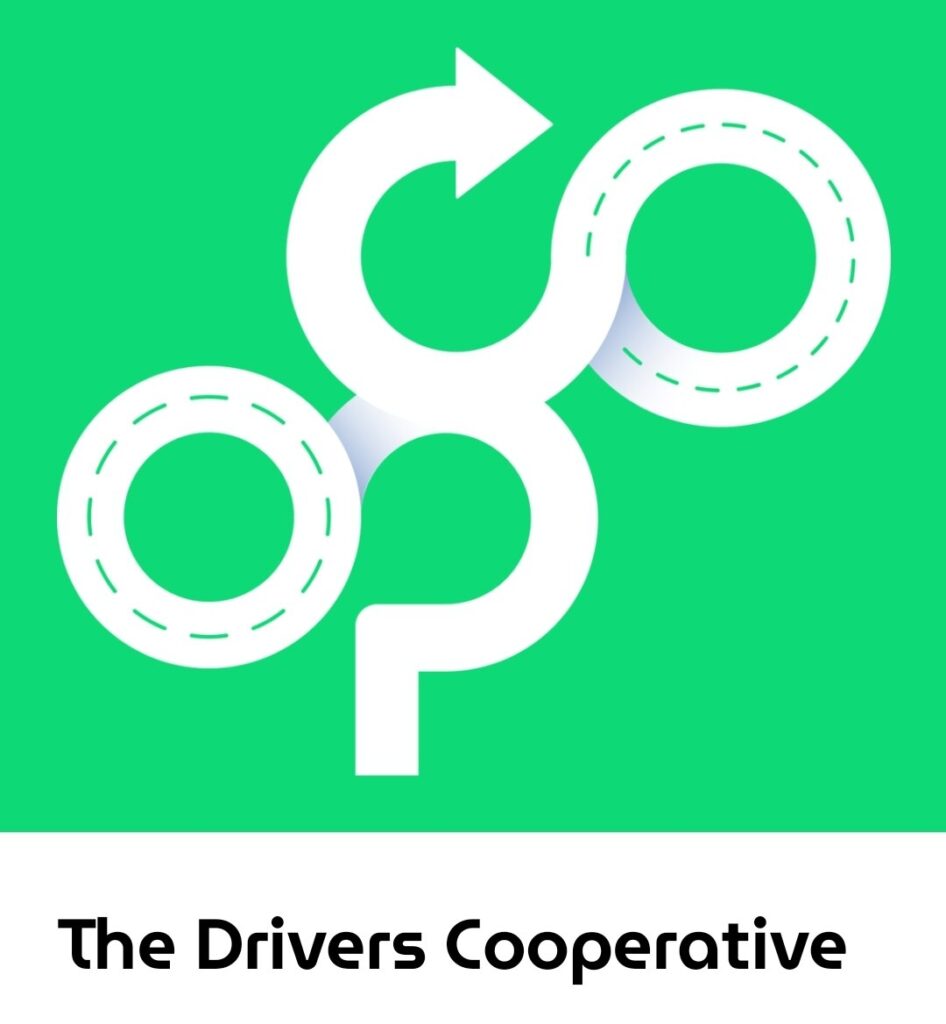
Scholz shows that throughout history, cooperatives have typically been founded to serve the needs of people who are not supported by the safety nets provided by families, communities, or markets. In industrialized countries, particularly in Europe, cooperatives have often been created as a response to state intervention or regulation. Meanwhile, in developing countries, cooperatives have arisen in the absence of adequate support from families or larger communities. It’s important to note that the raison d’être of platform cooperatives is often not to build global monopolies that kill off the competition. Rather, these cooperatives seek to improve the situation of the communities that start them.
Scaling co-ops involves competing with organizations that are favorably regulated or that don’t play by the rules, giving them an advantage. Scholz argues that the scaling of platform co-ops often involves competition with organizations that do not adhere to the same environmental or labor standards, and that spent countless millions on lobbying legislators, which gives them an advantage.
He argues worker coops and multi-stakeholder cooperatives are the most powerful organizational structure in addressing challenges of social justice and provides updates on several platform cooperatives that have succeeded to reach appropriate scale including Drivers Coop, Smart.coop, Up&Go, CoopCycle, NeedsMap, and Stocksy United.
And in case of Up&Go and arguably also with CoopCycle, worker co-ops have managed to retain the human trust that comes with small scale cooperatives by federating them and working under one platform, thereby following the playbook of Italian social cooperatives that form alliances and federations to compete with large entities.
There are notable differences between venture-capital-funded startups and platform cooperatives in terms of funding, growth approaches, primary goals, collaboration, community involvement, and innovation. VC-funded startups rely on venture capital for funding, while platform cooperatives often turn to crowdfunding, co-op banks, and philanthropy. Platform cooperatives prioritize generating revenue quickly. The model of venture capital funded startups centers around rapid expansion leading to a swift exit to acquisition by a larger tech company, while platform cooperatives prioritize sustainable and inclusive growth with the goal of serving members over a lifetime. While venture capital funded startups prioritize growth and profit, platform cooperatives value long-term viability of the business and inclusivity. Additionally, venture capital funded startups rely on external investors, while co-ops often depend on internal investors, though more and more are opening up to non-controlling shares for external shareholders, too. While community engagement is limited for vc-funded startups, platform cooperatives prioritize community involvement as a clear priority. Lastly, while venture capital startups prioritize and encourage tech innovation, this may be more limited for platform cooperatives due to limited resources.
Focusing on practical lessons for platform cooperatives Scholz offers nine aspects, strategies, and considerations for scaling platform cooperatives. These include leveraging shared digital infrastructure through federations and social franchises, replication of existing models with local adaptations, conversion of startups into community ownership through trust buyouts and tokenization, exploring distributed technology such as web3 prototypes, and creating globally distributed platform cooperatives. Regulation, supportive grassroots movements, alliances with social and political organizations, legal structures, the need for a supportive international ecosystem ( all along value-aligned supply chains), and the role of cooperative development institutions and anchor institutions are all key factors that can impact the scaling of platform cooperatives. By considering these factors, platform cooperatives can foster a culture of cooperation and mutual aid, achieve growth and impact.
1) Federations and Social Franchises Using Shared Digital Infrastructure
One way that platform cooperatives can scale is by leveraging shared digital infrastructure, as we can see in examples like CoopCycle and soon, Drivers Cooperative.
CoopCycle is an open-source delivery platform that allows cooperatives to offer delivery services to customers. Worker cooperatives that join the federation must adhere to strict rules, such as using bicycles for delivery for environmental reasons.
Another approach to scaling through shared digital infrastructure is the social franchise model, which has been explored by platform cooperatives such as Eva.coop. The model involves providing a brand, business template, and digital infrastructure to cooperatives around the world, who become franchisees of the main entity.

2) Replication
The second approach is replication, which we can observe to some extent in the case of Smart.coop. This cooperative has branches in seven European countries, all with similar objectives and models, but with distinct differences due to the treatment of freelancers according to local laws. Rather than reinventing the wheel and investing significant resources in developing bylaws and business templates from scratch, the replication approach involves adapting the existing model to local context. Although local customization is still required, this approach simplifies the launch process.
3) Conversions
Scholar and author Nathan Schneider has proposed conversion models such as trust buyouts and tokenization as a means of transitioning startups into community ownership. In trust buyouts, users buy out investors, enabling employees of the business to take out loans to purchase company shares on behalf of the cooperative’s users.
4) Distributed Technology
With the emergence of web3 prototypes gaining traction in the crypto economy, new forms of cooperatives may emerge within this broad field of experimentation, despite many serious misunderstandings about cooperative principles in that world. While still at an early stage, there are likely to be powerful examples of cooperatives that incorporate these new technologies and approaches. Early examples of data cooperatives, for example, include PolyPoly.
5) Globally distributed platform cooperative
While some platform cooperatives are focused on serving a group of workers in a single city, globally distributed platform cooperatives like Stocksy or Fairbnb allow member-owners from all over the world to join and trade their videos and photos through the platform. This approach can be viewed as a means of scaling, as it enables a larger pool of members to participate and benefit from the cooperative’s services.
6) Regulation
Scholz emphasized that regulation is a key factor in scaling cooperative enterprises. A positive example of this can be seen in the United States, where the New Deal’s Rural Electrification Administration was established in 1935 to promote rural electrification and cooperative development.
However, there are also examples of regulatory frameworks in the cooperative space that have backfired. For instance, in the 1990s in Brazil, unscrupulous entrepreneurs established cooperatives because the law required them to only have independent contractors instead of employees. This allowed the entrepreneurs to avoid providing workers with benefits and other protections afforded by labor law, which only covers employees.
The question of incorporation is closely related to regulation and can significantly impact the scaling of cooperative enterprises. In some geographic regions, it may not be possible to incorporate as a platform cooperative, which could limit the ability of cooperatives to grow and expand. In such cases, it may be advisable to consider non-cooperative legal forms, such as limited liability corporations, to enable scaling. Countries such as Brazil, Indonesia, and Japan may have regulatory frameworks that make it difficult to incorporate as a platform cooperative, making alternative legal forms necessary for scaling. Ultimately, the choice of legal form will depend on the specific circumstances of each cooperative and the regulatory environment in which it operates.
7) A supportive Grassroots Movement is Key.
The success of the ULCCS cooperative in the Indian state of Kerala can be attributed to both regulatory support and grassroots movements that promote a culture of cooperation. The government of Kerala has been a proud supporter of the country’s oldest worker cooperative in the construction sector, which has over 12,000 employees and 2,000 members. Additionally, the cooperative has benefited from a culture that is deeply supportive of cooperative enterprises.

8) Sponsoring Authorities, Social Movements, and Anchor Institutions
Alliances with social movements and political parties can be advantageous for the development and growth of cooperative enterprises, as seen in the British context. In 1917, the Cooperative Party was formed in the United Kingdom, and to this day, it maintains a close alignment with the Labour Party. This alliance has enabled the Cooperative Party to advocate for policies that support cooperative enterprise and promote a more cooperative economy. By working with political parties and social movements, cooperatives can build stronger networks and gain greater visibility and support, helping to create a more enabling environment for cooperative development.
Cooperative development institutions play a crucial role in supporting the growth of platform cooperatives. Examples of these institutions include the Center for Family Life and Sunset Park in New York, the UnFound UK accelerator, the Start.coop accelerator, Platform Coops Germany, the emerging platform coop incubator Amsterdam, and the SEWA Federation in India. These institutions provide support for the development of platform cooperatives through various means such as incubation, mentorship, funding, and training. By fostering a supportive ecosystem, these institutions contribute to the growth and sustainability of platform coops.|
9) Internationalist Ecosystem Thinking
Cooperative ecosystems are already emerging, such as La Zona in Catalonia, which is attempting to create a local, ethical, and sustainable marketplace as an alternative to large online retailers like Amazon. In Finland, Italy, and India, national and regional cooperatives in various sectors are mutually supportive networks.
Anchor institutions like the Platform Cooperativism Consortium at the New School have a crucial role in supporting the growth of platform cooperatives by convening communities, building networks, advocating with policy makers, providing credibility to the movement, conducting research, and fostering a new generation of scholars in this emerging academic field.
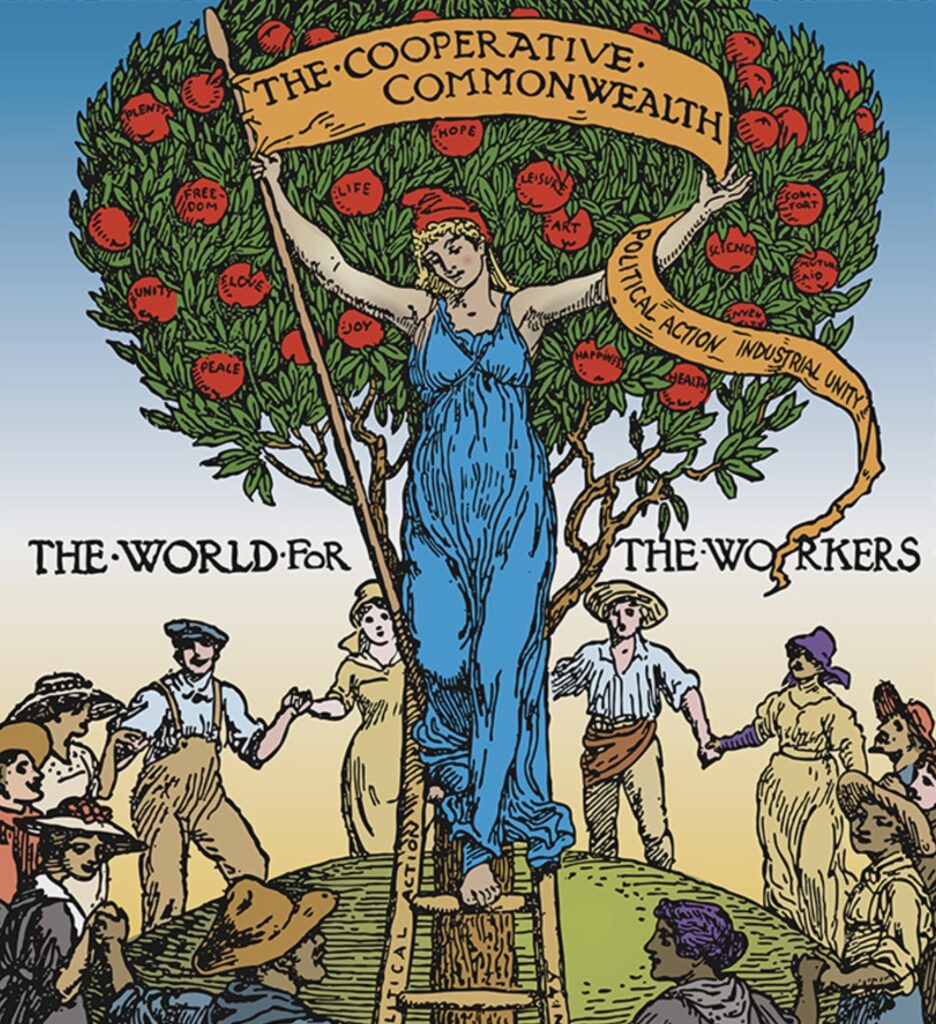
The vision behind scaling platform cooperatives, for Scholz, is not to create an economy dominated solely by cooperatives, but rather a diverse range of organizations, including independent worker- and user-managed enterprises, both platform-based and not, up and down the supply chain. As a supporter of a “bricolage of organizations”, I recognize the importance of various organizational models such as social enterprises, community organizations, and publicly owned entities, alongside cooperatives.
This vision prioritizes a pluralistic digital commonwealth approach that recognizes different sectors may demand different structures and sizes of cooperative enterprises. It is a vision of a digital Cooperative Commonwealth network of small autonomous interlinked but competing co-ops. In the United States, this goes back to the Knights of Labor fought for a multiracial cooperative commonwealth as early as the 1880s And of course there is a long utopian socialist lineage from Henri de Saint Simon to Robert Owen that evoked a global federation of cooperative communities. This approach fosters a more diverse and resilient economy that is responsive to the needs of communities and supportive of multiple models of enterprise.
Spicer emphasizes that not all cooperatives need to scale, but, more generally speaking, those that can should try to do so and have an obligation to do so. Scholz holds the belief that the decision to scale platform cooperatives is dependent on the specific sector and business model. For instance, sectors such as ride-hailing or short-term rental may require global scaling, while others like home services or care may not need to become digital platforms with users all over the world. Both Spicer and Scholz agree that it is crucial for cooperatives, whether online or off, to remain true to their principles when scaling, to avoid losing sight of their purpose – much like Goldilocks in the famous tale had to find the bowl of porridge that was just the right temperature. The question of what is “just right” in scaling is essential for (platform) cooperatives to answer.